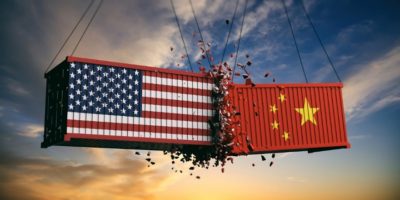By Jennifer Horvath, BLG Attorney
Section 301, China tariffs, Lists…. There is a lot to learn about the new Section 301 tariffs being applied to imports from China. Below is a brief overview of the China tariff schedules, and key ways to mitigate the potential amount owed due to these extra duties.
What is Section 301?
Section 301 is under the Trade Act of 1974 and has not been often used. The purpose is to eliminate unfair trade practices that adversely affect U.S. trade. The President is solely authorized to take all appropriate action, including retaliation, to redress the unfair trade action or practice by a foreign government. However, the U.S., as a member of the World Trade Organization (WTO), must consult with the other country to which the tariffs are being applied through WTO methods.
Section 301 investigations can focus on just one country, as is occurring in 2018. The Section 301 tariffs are only being applied to imports from China with the aim of decreasing China’s practices regarding U.S. intellectual property. One main contention of the U.S. is that China policies and laws require forced U.S. technology transfers when U.S. companies want to use manufacturers or establish factories there
What are all these Lists?
The Section 301 tariffs are being introduced and implemented in waves, as the U.S. enters different rounds of consultation with China. The first round of potential tariffs was introduced in April 2018, and after much commentary and review, the final tariff list to which the Section 301 duties apply became effective starting July 6, 2018. For this “List 1” or First “Tranche” as they are now also being referenced, originally there was a list of approximately 1,333 tariff codes to which the 25% Section 301 duty would be applied. After the comments, the tariff code list was reduced by almost a quarter, to a total of 818 tariff codes identified to the 8th digit.
Efforts have become faster paced now. The List 2 of proposed tariff codes which would receive the 25% Section 301 duty was quickly introduced in July. Then a potential List 3 followed shortly thereafter. List 2 and 3 have a comment period, but much shortened from the List 1 process. List 2 is now set to become effective starting August 23rd. This second List includes 284 tariff lines representing $16 billion in imports. Only 5 tariff codes were removed from List 2 after the comment period.
The comment period for List 3 ends on September 6th. As of now, over 6,000 tariff code lines have been proposed for the third list, which encompasses another $200 billion in imported products from China. Essentially, much of what was not originally proposed in List 1 or 2 is now being captured in List 3. However, there may even be a fourth List down the round, as there is still a segment of about $200 billion in imports which has not been proposed yet in any of the three lists.
What to do now?
Two key actions are the most critical now: Submitting exclusion requests, if your product falls under List 1 or 2is the first. The second key action, which ties into the exclusion requests as well, is making sure your product classifications are correct. What if the classification which has been used for a certain product was on the enacted List 1, but in fact your product should have been classified under a HTS code, which was removed from List 1? Or, what if the product should be classified under a tariff code which falls under List 3? Knowing the proper classification of products confirms when the importer should start paying the China Section 301 tariff, and potentially at what rate. Originally, List 3 was proposed to be only a 10% additional tariff, reduced from the 25% in Lists 1 and 2. Now, the U.S. Trade Representative, after approval from the President, has recommended that the tariff rate be increased to 25% like the others.
An importer may think, what does it matter then? Well, it can matter quite a bit in the long run. When the Section 301 tariffs have ended, as eventually will happen, they may end in phases. What if certain Lists are kept active longer than other Lists? If your product should have been classified under one of the Lists that potentially has a shorter enactment period, then you are paying more money by using the improper classification for the item.
Also, when submitting an exclusion request, the requestor must explain why their product is different than other products classified in that 8-digit tariff classification. The requestor must also provide the proper 10-digit tariff classification. When reviewing the exclusion request, if it is determined the improper tariff code was used for the product, the request will be denied. The requestor must then re-file with the correct tariff classification, adding more time and expense to the process. If this occurs after certain cutoff dates, it could mean the requesting importer lost the chance to submit its exclusion request.
Beyond Section 301 enforcement, U.S. Customs and Border Protection (CBP or Customs) is also ramping up enforcement in general on antidumping/countervailing (ADD/CVD), and other key import areas such as classification and value, and free trade agreements. Proper usage of the tariff code is key to properly identifying any ADD/CVD and free trade agreements such as NAFTA. Customs received more funding for the next fiscal year than it requested, for many of its key sections.
Overall, this is a hectic time in the trade world that has many importers scrambling. Keeping focused on ensuring compliance with import laws and regulations, especially classification, will go a long way towards helping to understand the true potential impact of the Section 301 Lists to a company. Knowing the accurate impact then leads to designing a better strategy to deal with the tariff hikes.



























